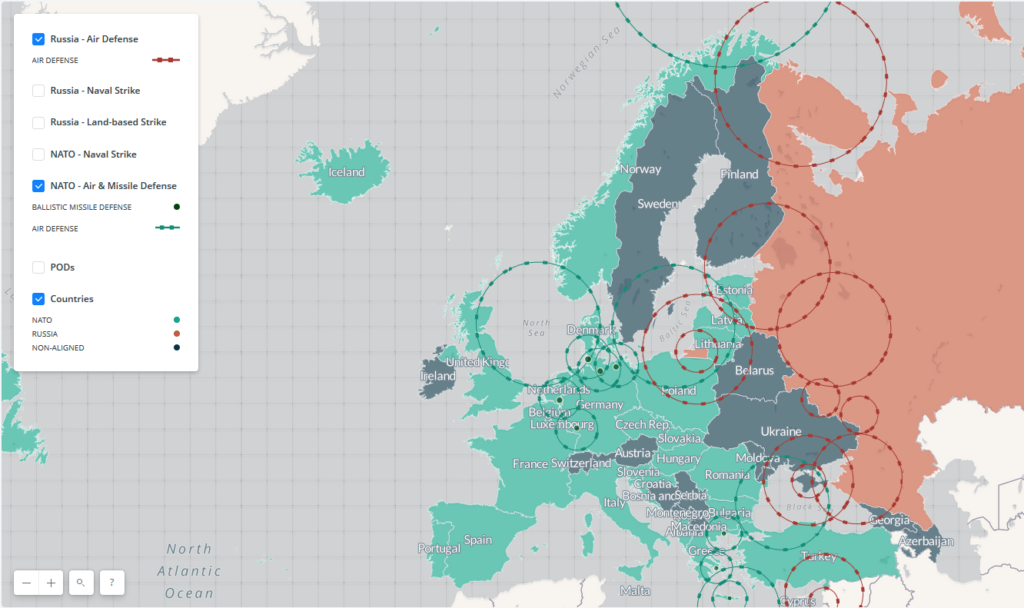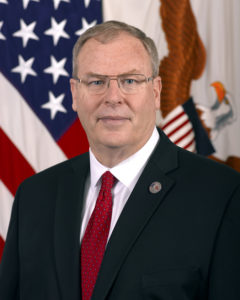This seems odd: Trump appoints art historian to national security council

Excellence in Historical Research and Analysis

Excellence in Historical Research and Analysis
Category National Security Policy
Flynn is Out
No new rhyming headlines, but NSC Director Lt. General Michael T. Flynn has resigned. He now holds the record for the shortest serving NSC Director, having only held the seat for 24 days. The longest serving holder of that office lasted 2478 days (Henry Kissinger).
With Flynn having been fired by the previous administration and resigned from this one, I suspect this ends his career in government. He might end up as a news commentator.
The acting NSC Director is another U.S. Army Lt. General Keith Kellogg. His Wikipedia page is here: https://en.wikipedia.org/wiki/Keith_Kellogg
Oh…and we still don’t have a Secretary of the Army (Robert M. Speer is acting secretary).
Stalemate in Afghanistan
By the way, there is a still a war going on in Afghanistan, by most accounts, it is not going that well; and we probably need to increase our troop levels. On Thursday General John Nicholson, commanding general of NATO forces in Afghanistan, told congress “I believe we are in a stalemate.”: nato-shortfall-troops-afghanistan-us-general
Also: https://uk.news.yahoo.com/u-general-calls-more-troops-003147055.html
I have no reason to quibble with that assessment. Victory is certainly not just around the corner.
Some data from these articles:
- NATO has 13,300 troops in Afghanstan, about half of them American (8,400)
- Afghan losses in the first ten months of 2016 were 6,785 killed, an increase of a third over 2015.
- There were 11,500 civilians killed or injured in 2016, the most since the UN began keeping records in 2009 (nearly 3,500 killed and nearly 8,000 wounded).
- Afghan government forces control no more than two-thirds of national territory (60% according to another article).
- “We have roughly a two-to-one ratio of contractors to soldiers,” said Nicholson.
- So, this works out to be 17,000 contractors, 8,400 American troops and 4,900 other NATO troops.
- Cost of the 16 year war so far: around 2,000 American lives and $117 billion.
Needless to say, General Johnson has recommended that we increase troop levels there. He has asked for several thousand more. We did have around 100,000 troops there in 2011, now we have less than 10,000.
No Secretary of the Army
So, we don’t have a Secretary of the Army. Not entirely surprised if one or more of the various nominees has to withdraw. It is the nature of pulling from the outside and the nomination of successful business people; that a few can’t clear the nomination process.
Article here: trumps-nominee-army-secretary-withdraws-name
Will it be another 2-3 months before we have a Secretary of the Army? What is the status of the other politically appointed positions in the Army (assistant secretaries and under secretaries)?
U.S. Defense Budget
By the way, the defense budget is supposed to be going up (maybe). Now, it has been in decline a while. We were told by a U.S. Army director back in 2009 not to expect continued support because of upcoming budget cuts. This was before sequestration. Sequestration basically shrunk the Army’s budget by 5% or so every year for three years running (2013-2015). It was “lifted” for 2016, but this only meant that the budget did not decline further. The U.S. Army went from a high of around 570,000 troops in 2010 to around 475,000 troops now. They were preparing to continue drawing down to around 450,000 troops.
Now, budget is supposed to be increasing. The Army is supposed to grow to 540,000 troops, the navy from a 275-ship navy to a 355-ship navy and our nuclear forces are supposed to be upgraded. So far the only thing slated for reduction is the F-35 (maybe). The U.S. is still running a deficit and certainly tax increases are not on the horizon; in fact they are talking about tax cuts. Hard to know how this is going to all balance out.
The defense budget authorized for FY2017 is 618.7 billion. We are already four months into that fiscal year. It was 604.2 authorized in 2016.
The nominated head of OMB (Office of Management and Budget) is a tea-party fiscal conservative: mulvaney-defense-budget
…
P.S. The defense budget basically increased every year from 1996 to 2008, going from 266 billion (16.8% of the total government budget) to 696 billion (20.9% of total government budget). In was 698 in 2009, 721 in 2010, 717 in 2001, 681 in 2012, 610 in 2013, 614 in 2014 and 637 in 2015 (16.0% of total government budget). This is not inflation adjust dollars: Military_budget_of_the_United_States
P.P.S.: According to one source the size of the United States Army in 2010 was 566,045 in 2010: us-military-personnel-1954-2014
South China Sea
The South China Sea has moved front-and-center as a major issue (along with the one China policy): prevent-china-taking-over-territory
Just a few notes:
- Tillerson’s statement on Jan. 11 during confirmation hearings was “We’re going to have to send China a clear signal that, first, the island-building stops and, second, your access to those islands also is not going to be allowed.”
- Presidential spokesman Sean Spicer said yesterday “The U.S. is going to make sure that we protect our interests there.”
- And from the article: “Aides have said that Trump plans a major naval build-up in East Asia to counter China’s rise.”
Not sure what the “clear signal” is and how confrontational this will be. Right now, it is just talk. But, does this mean that the Trump administration is intending to expand the navy?
‘Your Lyin’ Eyes’: Visualizing the A2/AD Environment in Europe

Over, at the Center for Strategic and International Studies (CSIS), Ian Williams, Kathleen Weinberger, and Colonel John O’Grady have assembled data on NATO and Russian anti-access/area denial (known as A2/AD, love it or hate it) capabilities, which has been turned into a fascinating interactive graphic. The capabilities depicted include “air defenses, counter-maritime forces, and theater offensive strike weapons, such as short- or medium-range ballistic missiles, cruise missiles, and other precision guided munitions.”
Information on the map is divided into six categories:
Russia – Air Defense: Includes deployments of long-range Russian anti-air missile systems. Specific systems represented are the S-300 and S-400. Not included in map are Russia’s shorter ranged, highly mobile air defense assets, such as the Buk family of surface to air missile systems. These “shoot and scoot” launchers are embedded with Russian ground forces, and thus do not have fixed locations.
Russia – Land-based Strike: Includes deployments of short-range offensive ballistic missile systems, such as the SS-26 or Iskander short-range ballistic missiles, as well as deployments of Russian Oniks anti-ship missiles to Kaliningrad.
Russia – Naval strike: This category reflects the range (from notional locations) of Russia’s sea-based SS-N-30A Kalibr-type cruise missiles, and its SS-N-27 Sizzler anti-ship missiles.
NATO – Air Defense: Shows the estimated coverage areas and home-base disposition of NATO PATRIOT missile units, separately showing ballistic missile and air defense coverage areas. Although not reflected in this map, NATO is heavily reliant on fighter aircraft for air defense.
NATO – Naval Strike: Reflects the estimated range of U.S. Tomahawk Block IV (TLAM-E) sea-based cruise missiles.
NATO – Ports of Debarkation/Embarkations (PODs): These points show key logistical infrastructure, such as airports and seaports (APODs / SPODs), that could be used by NATO forces.
Figuring out how to fight effectively in this environment is what is keeping American and Western national security thinkers and planners up at night these days. The Third Offset Strategy was the first crack at doing so. Whether it will survive into the incoming Trump administration remains to be seen, though some signs indicate that it will. Stay tuned, folks.
Trump Administration Considering Keeping Robert Work On During Transition

In a somewhat surprising move, The Washington Post is reporting that the transition team for the incoming administration of Donald J. Trump is considering keeping the current Deputy Secretary of Defense Robert Work in office for three to six months. Work would help maintain continuity for the incoming Secretary of Defense-designate James Mattis and assist in preparing the Trump administration’s first defense budget proposal. He also quietly rallied support for Mattis’s selection as Defense Secretary, vouching for bipartisan confidence in the former USCENTCOM commander.
Holding Work over could be seen as a sign that Mattis and the administration may intend to keep elements of the Third Offset Strategy, which Work developed under current Defense Secretary Ashton Carter.
A few days ago, The Post reported that Mattis had clashed with senior Trump transition team officials over Defense Department appointments. Mattis allegedly first learned of the appointment of Vincent Viola as Secretary of the Army from the media, leaving him “furious.” Several senior Defense Department office remain to be staffed and Mattis has been said to have rejected several individuals proposed by Trump’s transition staff.
U.S. Relations with Russia
Suspect the basic nature of U.S. relations with Russia is going to be a issue for while. Note that in early December 27 Senators (12 Republicans and 15 Democrats) sent a letter to Trump: “The senators urged Trump to maintain sanctions against Russia “until key provisions of the Minsk Agreement are met,” and, notably, urges providing “defensive lethal assistance” to Ukraine.”
Link: 27-senators-12-republicans-statement-trump-ukraine-russia
Republican Senator John McCain spent this New Years in Kiev: us-ukraine-crisis-McCain
Earlier this week he was in the Baltic States (which are members of NATO).
The Senate is split 52-48 (Republican/Democrat). It takes only a handful of Republican senators working with the Democrats to influence, modify or overturn something they disagree with that the incoming administration would do. Trump, has indicated a more favorable position relative to Russia, as have several of his advisors like Flynn (nominated National Security Advisor) and Tillerson (nominated Secretary of State). This could end up generating an interesting (perhaps behind the scenes) tug-of-war between the President and Congress over our Russian policy. And then there is also the Russian hacking allegations.
…
P.S. A few more quotes from the early December letter written by 27 Senators:
Almost three years after Russia’s illegal annexation of Crimea and military aggression in eastern Ukraine, daily ceasefire violations along the line of contact make a mockery of the Minsk Agreement and demonstrate that this conflict in the heart of Europe is far from over.
Top Defense Priorities
As of 1 December, according to a memo from the Trump transition team, the top defense priorities were (only four listed):
1) Develop a strategy to defeat/destroy ISIS,
2) Build a strong defense [Eliminate caps from Budget Control Act; improve force strength/size/readiness],
3) Develop a comprehensive USG cyberstrategy,
4) Find greater efficiencies [pursue/build on ‘great work’ led by DSD Work; open to new ideas from the Department].
Article is here: trump-administrations-top-defense-priorities
Now, I believe #1 is already being done…except maybe for the emphasis on “defeat/destroy.” “Contain, disrupt and reduce” may be more viable consideration. Pretty hard to “defeat and destroy” a guerilla movement that spans across multiple countries and continents. It will also take a decade or two (or more). It is kind of like “defeating and destroying” the anarchist movement or the communist movement a hundred years ago.
“Finding greater efficiencies” is an effort that many administrations have pursued. Traditionally there has been no significant impact from these efforts, although it is hard to argue that they don’t need to be done. I suspect it will be hard to fundamentally improve the system without significant changes in the civil service system, addressing means and methods of government management, and addressing the oversight of government programs by uniformed personnel. It may also require the restructuring of the contractors. Like any truly challenging problem, there are multiple aspects to addressing this.
I might also have a few other things on my top defense priorities list.